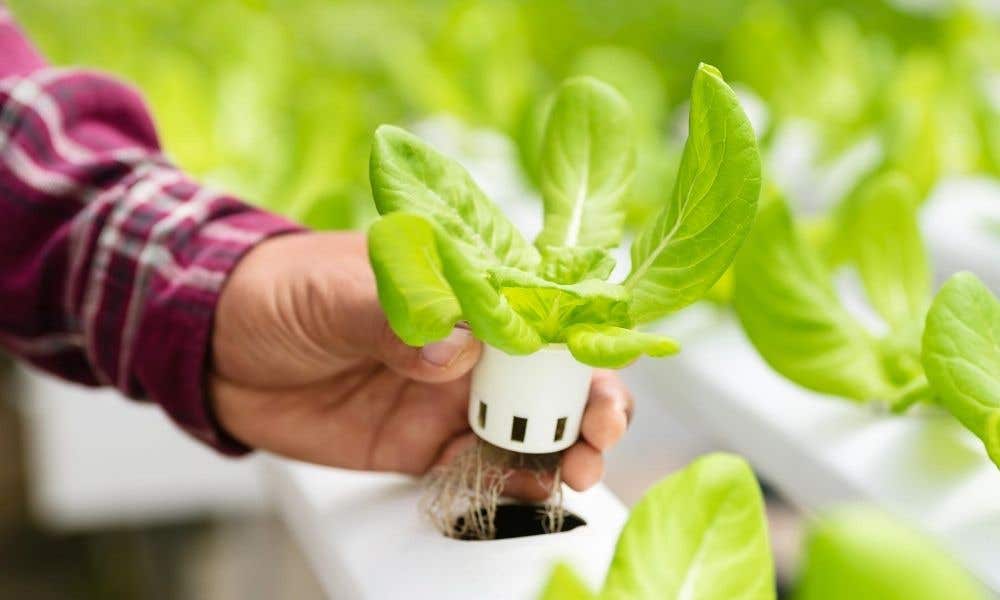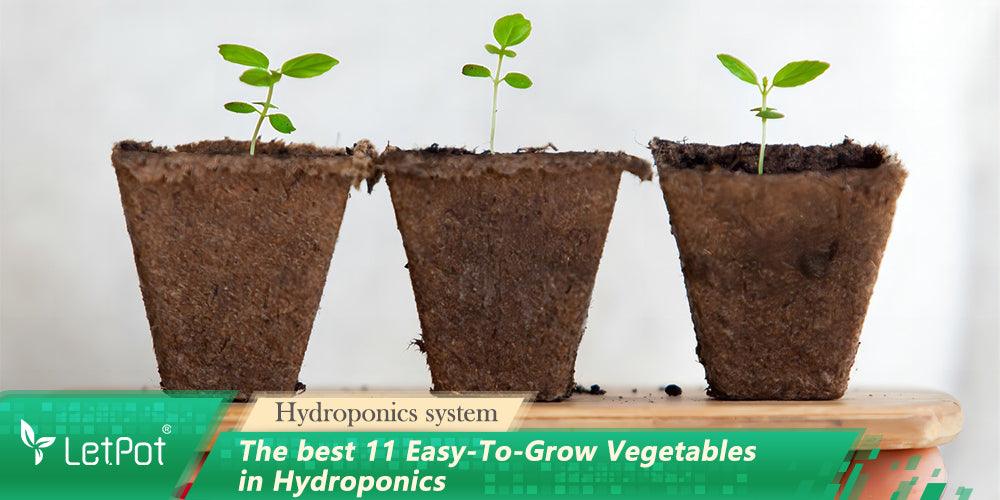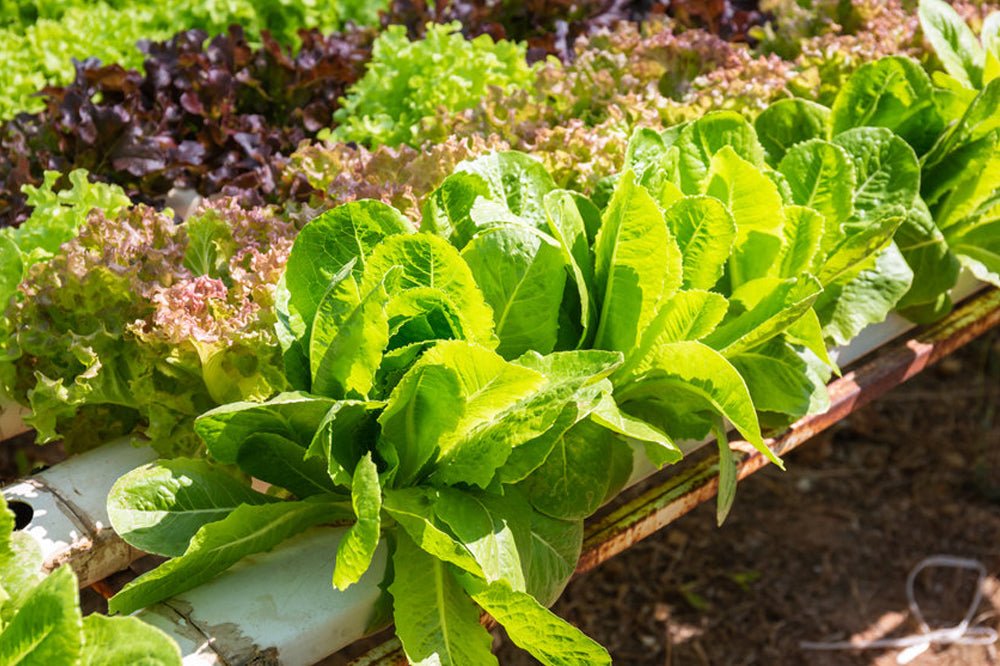Hydroponics is a method of growing plants without soil. It uses nutrient-rich water to nourish plants.
This method is popular for its efficiency and space-saving benefits. So, what are the best vegetables for hydroponics? Hydroponics allows you to grow vegetables in a controlled environment, making it possible to cultivate a variety of plants. This technique is perfect for urban gardeners and those with limited space.
Not all vegetables thrive in hydroponic systems, though. Some are better suited due to their growth habits and nutrient needs. In this blog post, we’ll explore which vegetables are ideal for hydroponics, helping you make the best choices for your garden. Whether you’re new to hydroponics or looking to expand your garden, understanding these vegetables will set you up for success.

Credit: matsuoutdoorsmanshow.com
Introduction To Hydroponics
Hydroponics offers a soil-free method of growing plants. Ideal vegetables include lettuce, spinach, and tomatoes. These thrive in water-based systems, making them perfect for beginners.
Hydroponics is a method of growing plants without soil. Instead, plants grow in a nutrient-rich water solution. This system allows for precise control over nutrients. It also conserves water. This makes hydroponics an efficient gardening method. Hydroponic gardening can be done indoors or outdoors. It is ideal for small spaces. Urban gardeners find it especially useful. This method is gaining popularity for growing vegetables. Let’s explore why hydroponics is beneficial and how it works.Benefits Of Hydroponic Gardening
Hydroponic gardening offers many benefits. Plants grow faster in a hydroponic system. This is due to direct access to nutrients. There is no need for soil, which reduces pests and diseases. Hydroponics uses less water than traditional gardening. This is because the water gets recycled. It is an eco-friendly option. It also allows year-round gardening. This means fresh vegetables at any time.How Hydroponics Works
Hydroponics works by using a nutrient solution. This solution is water mixed with essential minerals. Plants are placed in a growing medium. This medium supports the plant’s roots. The nutrient solution is delivered to the roots. This can be done using different methods. Some systems use a pump to circulate water. Others use a wick to draw water to the roots. Lighting is also important. Many hydroponic systems use grow lights. These lights mimic sunlight. This allows plants to photosynthesize indoors. Hydroponics is a simple yet effective way to grow vegetables. Understanding its workings can help you get started. “`Leafy Greens
Spinach, lettuce, and kale are top choices for hydroponics. These leafy greens grow quickly and need little space. Perfect for small indoor gardens.
Leafy greens are a perfect choice for hydroponic gardening. They grow quickly and require minimal space. This makes them ideal for beginners. Plus, they offer a fresh, nutritious addition to your meals. Let’s explore some of the best leafy greens for hydroponics.Lettuce
Lettuce thrives in hydroponic systems. It grows quickly, often in just 30 days. This means you can have a constant supply. Varieties like Butterhead and Romaine are popular. They provide a crisp texture and mild flavor. Lettuce also requires little maintenance. Just ensure it gets enough light and nutrients.Spinach
Spinach is another excellent choice. It’s packed with vitamins and minerals. Spinach grows well in hydroponics, producing tender leaves. It prefers cooler temperatures. This makes it perfect for indoor systems. Regular harvesting encourages new growth. So you can enjoy fresh spinach for weeks.Herbs
Herbs are a great choice for hydroponic gardening. They grow quickly and do not need much space. Fresh herbs add flavor and aroma to your dishes. They are easy to maintain in a hydroponic setup. Let’s explore some of the best herbs for hydroponics.
Basil
Basil thrives in hydroponic systems. It needs plenty of light and warmth. This herb grows fast and can be harvested many times. Use basil in pasta, salads, and soups for a fresh taste. Keep the water nutrient-rich for the best results.
Mint
Mint is another excellent herb for hydroponics. It grows rapidly and spreads easily. Mint needs less light compared to basil. Use it in drinks, desserts, and sauces. Make sure to trim it often to control its growth. Keep the roots moist and well-nourished.
Fruiting Vegetables
Fruiting vegetables are perfect for hydroponics. These plants grow well in water-based systems. You can enjoy fresh produce all year round. Let’s explore some top choices!
Tomatoes
Tomatoes are a favorite for hydroponic gardening. They thrive in controlled environments. Here are some tips to grow tomatoes:
- Use a nutrient-rich solution.
- Maintain a pH level between 5.5 and 6.5.
- Provide 8-10 hours of light daily.
Tomato plants need support as they grow. Use stakes or trellises. This keeps the fruit off the ground. Prune regularly to encourage fruit production. With care, you will enjoy juicy tomatoes.
Cucumbers
Cucumbers are another great option. They grow quickly in hydroponic systems. Follow these tips for best results:
- Maintain a pH level between 5.8 and 6.0.
- Provide 10-12 hours of light daily.
- Use a balanced nutrient solution.
Cucumber plants need space to spread. Use a trellis to support the vines. This prevents diseases and keeps fruits clean. Harvest cucumbers when they are firm and green. Enjoy fresh, crisp cucumbers from your hydroponic garden!
Root Vegetables
Root vegetables can thrive in a hydroponic system. They are nutritious and versatile. Growing them hydroponically ensures they receive all necessary nutrients. This method also allows for better control of the growing environment.
Carrots
Carrots are a popular choice for hydroponic systems. They grow well in a controlled environment. Here are some tips for growing carrots hydroponically:
- Use a deep container to allow root growth.
- Maintain a nutrient solution with balanced pH levels.
- Provide adequate light for at least 12 hours a day.
Using a deep container is essential for carrot growth. They need space for their roots to develop properly. Regularly check and adjust the nutrient solution. Carrots thrive best in a pH range of 6.0 to 6.5.
Radishes
Radishes are another excellent choice for hydroponics. They grow quickly and are easy to manage. Here are some tips for growing radishes hydroponically:
- Use a shallow container with good drainage.
- Keep the nutrient solution at a stable temperature.
- Ensure the radishes get at least 8 hours of light daily.
Radishes can mature in as little as three weeks. They require less depth than carrots. A shallow container with good drainage is sufficient. Maintain a consistent temperature for the nutrient solution. Radishes prefer a pH range of 6.0 to 7.0.
Cruciferous Vegetables
Cruciferous vegetables are a great choice for hydroponic gardening. They are nutrient-rich, easy to grow, and perfect for indoor farming. These vegetables thrive in a controlled environment, making them ideal for hydroponic systems.
Kale
Kale is a leafy green that is packed with vitamins and minerals. It’s easy to grow and does well in hydroponic setups. Kale needs a lot of light and a steady supply of nutrients to grow. It matures quickly, allowing for multiple harvests throughout the year.
- Rich in vitamins A, C, and K
- Requires 10-12 hours of light daily
- Harvest leaves regularly to encourage growth
Arugula
Arugula is a peppery green that adds flavor to salads. It’s fast-growing and thrives in hydroponic systems. Arugula prefers cool temperatures and can be harvested in as little as four weeks. This makes it a quick and rewarding crop for hydroponic gardeners.
- Contains vitamins A, C, and K
- Grows best in temperatures between 50-65°F
- Ready to harvest in 4-6 weeks
Legumes
Legumes are a fantastic choice for hydroponic gardening. They offer a range of nutritional benefits and can thrive in a hydroponic setup. This makes them ideal for year-round cultivation. Plus, legumes can help improve soil health by fixing nitrogen. This is great news for those who plan to rotate crops.
Peas
Peas are easy to grow hydroponically. They do well in a controlled environment and mature quickly. Peas need a support structure as they grow. This helps them climb and develop properly. Use a trellis or netting for this purpose. They prefer a nutrient solution with a balanced pH level. Regular monitoring ensures healthy growth. Peas are ready to harvest in about 60 days.
Beans
Beans are another excellent choice for hydroponics. They grow rapidly and produce a high yield. Like peas, beans need support to grow upright. Use stakes or trellises to aid their growth. Beans thrive in a nutrient solution with a slightly acidic pH. Keep the pH between 5.5 and 6.5. Regularly check the nutrient levels to keep the plants healthy. Beans can be harvested in about 50 to 60 days.

Credit: floraflex.com
Tips For Successful Hydroponic Gardening
Lettuce, spinach, and kale thrive in hydroponic systems due to their fast growth. Basil, mint, and cilantro also perform well. Tomatoes and cucumbers can be grown successfully with proper support.
Growing vegetables hydroponically can be rewarding. It requires attention to detail and some basic know-how. Success in hydroponic gardening depends on several key factors. Proper nutrient solutions, adequate lighting, and temperature control are essential. Let’s explore these tips for a thriving hydroponic garden.Nutrient Solutions
Nutrient solutions are vital for hydroponic gardening. They provide essential minerals. Without soil, plants depend on these solutions for growth. Choose a balanced nutrient mix designed for hydroponics. Regularly test the solution’s pH levels. Aim for a pH between 5.5 and 6.5. Maintain consistent nutrient levels. Adjust as needed for optimal plant health.Light And Temperature
Light and temperature significantly impact plant growth. Most vegetables need 12 to 16 hours of light daily. Use LED grow lights for efficient energy use. Position lights close to plants but avoid burning. Monitor temperature in the growing area. Ideal temperatures range from 65°F to 75°F. Avoid extreme temperature fluctuations. Keep plants in a stable environment for best results. “`
Credit: letpot.com
Conclusion
Hydroponics offers a fantastic way to grow fresh vegetables. Leafy greens like lettuce and spinach thrive in this system. Herbs such as basil and parsley also do well. Tomatoes and cucumbers are popular choices too. These vegetables grow quickly and yield high results.
Experiment with different varieties to find your favorites. Keep your hydroponic setup clean and well-maintained. This ensures healthy growth and a bountiful harvest. Happy growing!





